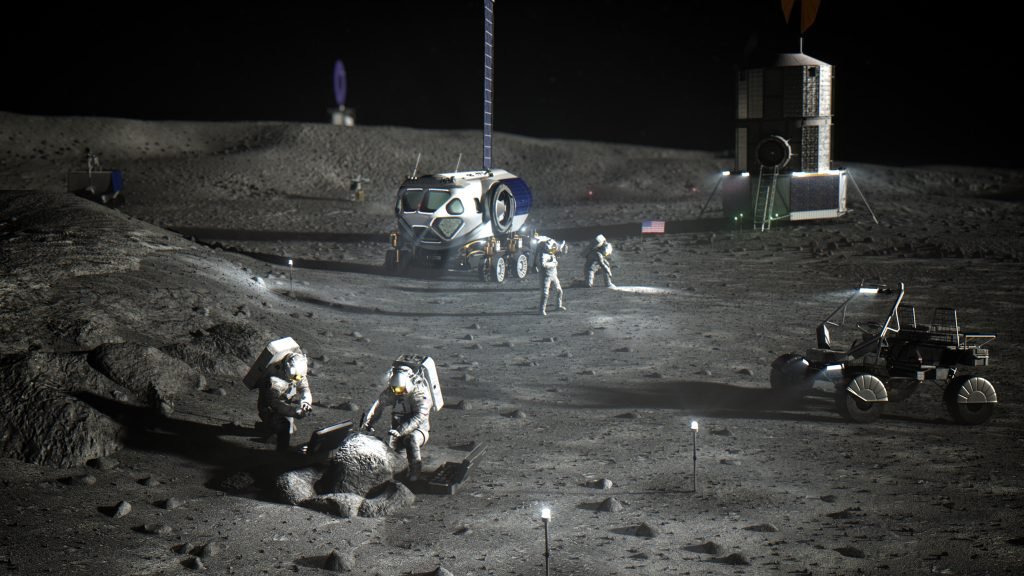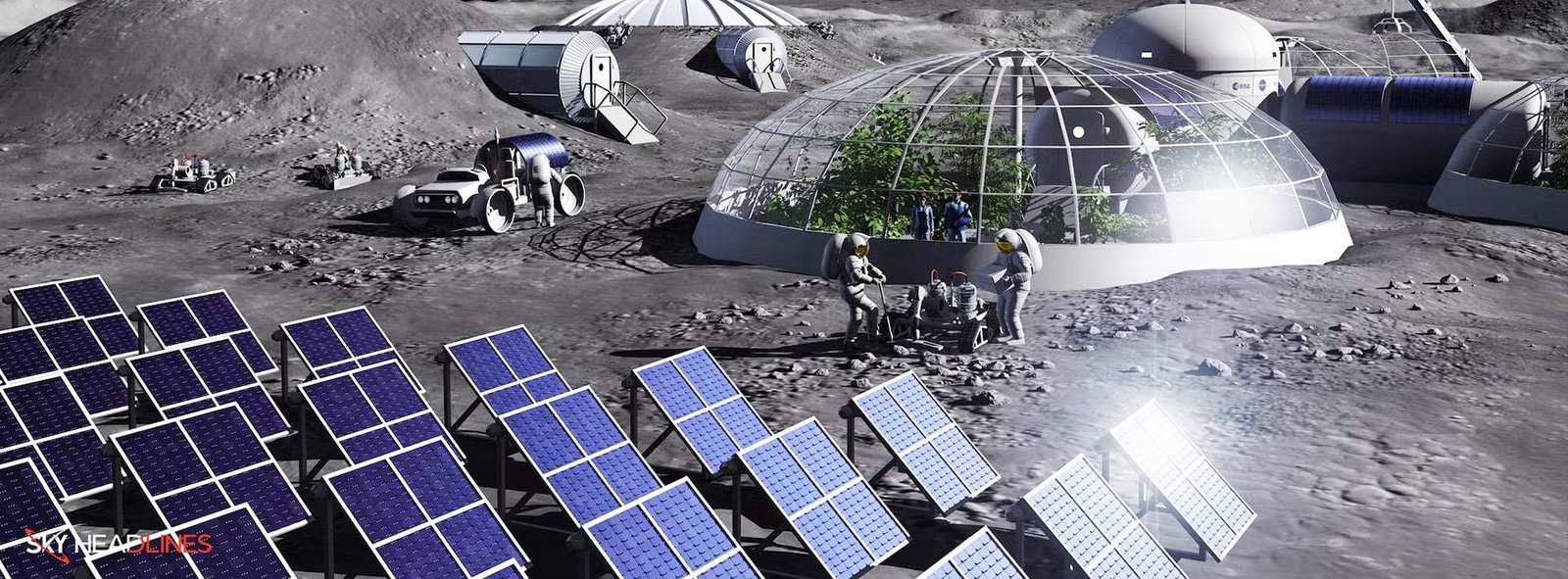Exploring the moon has always been a topic of fascination for scientists, researchers, and space enthusiasts. NASA’s Artemis program aims to take this fascination to the next level by landing the first woman and next man on the lunar South Pole in 2024. But that’s not all. The program also aims to establish sustainable exploration on the Moon by the decade’s end. To achieve this, NASA has developed the Artemis Base Camp concept. As it includes a modern lunar cabin, a rover, and even a mobile home.
So, get ready as we are about to explore,
What is NASA’s Artemis Base Camp Concept?
NASA’s Artemis Base Camp concept includes a modern lunar cabin, a rover, and a mobile home. It offers astronauts a place to live and work on the Moon for up to two months. The base camp will be located at the lunar South Pole. Hence, it has potential access to ice and other mineral resources. The crew will wear next-generation spacesuits that provide increased mobility. It will also, provide modern communications, and a more robust life support system than Apollo predecessors.

So,
NASA is evaluating proposals for a lunar terrain vehicle (LTV) and a pressurized rover. It could drive autonomously or remotely from Earth to conduct science and exploration activities. The unexplored south-polar region of the Moon offers unique opportunities to unlock scientific secrets about history. Along with the evolution of the Earth and the Moon, and the Artemis program aims to learn how to spend more time on the lunar surface and prepare for future trips to Mars by conducting life science research and mitigating hazards associated with space exploration.
Now, let’s take a closer look on,
What are the key elements of the Artemis Base Camp concept?
Artemis Base Camp is the proposed lunar outpost that NASA plans to establish in the near future. It is a fascinating concept that has captivated the imagination of space enthusiasts around the world. So, one of the most intriguing aspects of this project is the innovative technology. It will facilitate human exploration of the Moon.
Here are the three key elements that are going to play an important role in the Artemis Base Camp concept:
Lunar Terrain Vehicle (LTV):
The Lunar Terrain Vehicle, or LTV, will be a vital mode of transport for the astronauts stationed at the Base Camp. This unpressurized utility vehicle will be capable of navigating the rugged lunar terrain with ease, allowing astronauts to explore areas that are inaccessible on foot. The LTV will carry two astronauts in their Exploration Extravehicular Mobility Units (xEMU), the advanced spacesuit for lunar exploration. The xEMU suits will provide astronaut protection and mobility, enabling them to work on the lunar surface for extended periods. Moreover, the lunar terrain vehicle (LTV) will arrive after Artemis III in 2025 to build a base camp.
Habitable Mobility Platform:
Another key element of the Artemis Base Camp concept is NASA’s mobile lunar habitat concept, called the habitable mobility platform, which has a pressurized interior with life support systems. This allows astronauts to travel without wearing spacesuits, making it more comfortable and time-efficient. Unlike unpressurized rovers, which limit mission duration based on how long oxygen lasts in spacesuits, the habitable mobility platform enables longer and farther crewed exploration of the lunar surface. The Habitable Mobility Platform will enable astronauts to explore the Moon’s surface in greater detail and with greater flexibility than ever before. Experts can’t say much about the RV’s appearance since its final design has yet to be finalized. But it’s meant to accommodate many astronauts for up to two weeks of living and working.
Foundation Surface Habitat:
The Foundation Surface Habitat is a non-mobile structure designed for short stays of a few days by up to four astronauts. This pressurized habitat will provide astronauts with a safe and comfortable living space during their time at the Base Camp. It will be equipped with integrated life support systems to ensure the astronauts have everything they need to survive and thrive on the lunar surface.
Now, you might be thinking,
What is the purpose of the Base Camp?
The objective of the base camp is to establish a sustainable human presence on the moon by the end of the decade. Unlike the Apollo missions, the current effort seeks to lay the foundation for long-term exploration and utilization of the moon’s resources.
NASA’s Steve Creech highlights this shift in priorities by noting that while the Apollo missions were impressive, their main goal was to prove that the United States could achieve them. In contrast, the current lunar initiative aims to build upon the knowledge gained from past missions. Hence, they use it as a stepping stone for future endeavors. Here are some objectives of the Base Camp:
Artemis Base Camp is made to use the Moon’s resources in a sustainable way. In-Situ Resource Utilisation (ISRU) will provide essential resources for the camp.
The base camp will also establish sustainable power during the lunar day/night cycles.
Design and build machinery and electronics that can operate in the extreme lunar environment, including super-chilly permanently shadowed craters.
It also mitigates the harmful effects of lunar dust on equipment and human health.
The base camp will carry out surface excavation, manufacturing, and construction duties.
The crew will use advanced rovers, drills, and other equipment to explore and navigate the lunar surface and subsurface.
Let’s conclude this debate,
Crux of the discussion!
NASA’s Artemis Base Camp concept represents an exciting new era of lunar exploration, with the potential to establish a sustainable human presence on the Moon. The innovative technology and key elements of the Base Camp will enable astronauts to explore the Moon’s surface in greater detail. Along with greater flexibility than ever before. By exploring and navigating the lunar surface and subsurface, the Artemis program aims to prepare for future trips to Mars and unlock scientific secrets about the history and evolution of Earth and the Moon. As we look to the future, it is clear that the Artemis program represents a critical step in humanity’s journey toward deeper space exploration. We can’t wait to see what discoveries and achievements lie ahead.





